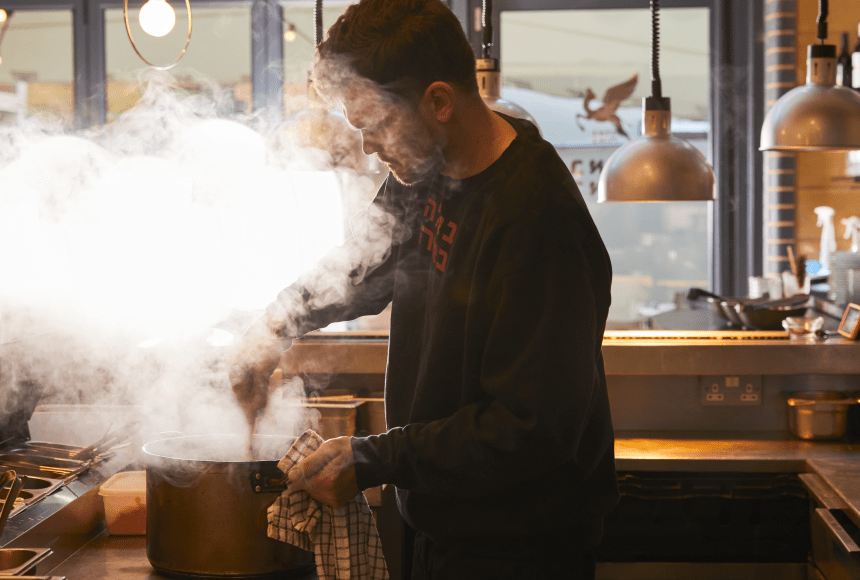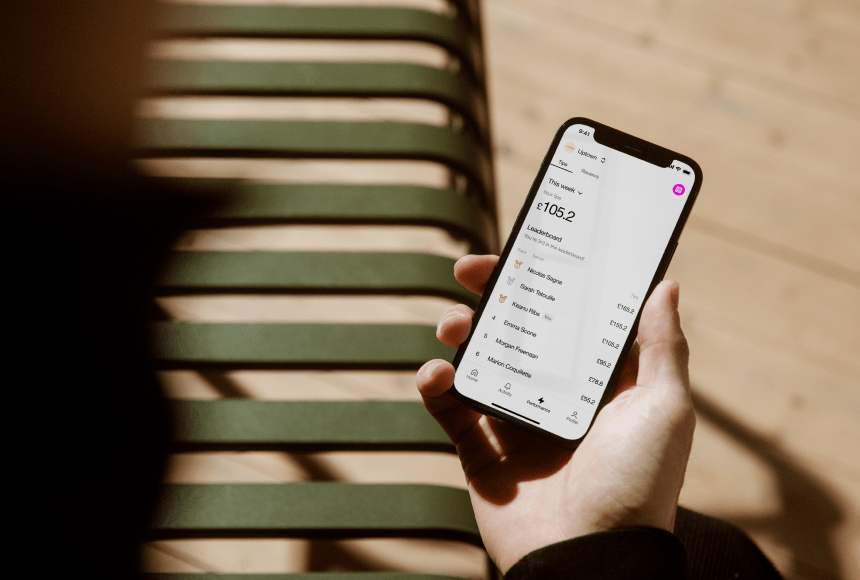
Crafting Clear Goals That Inspire and Elevate Your Staff
Why Performance Objectives Matter in Restaurants
In the fast-paced world of hospitality, every minute counts and every table matters. Your staff are on the front lines every day, ensuring diners leave satisfied and your reputation shines. But amidst the chaos of daily service, it’s easy to lose track of bigger ambitions. That’s where well-defined performance objectives come in.
Whether you manage a cosy neighbourhood bistro or a high-traffic brasserie, setting the right goals for your team can transform your restaurant’s results. Done wrong, objectives can feel like arbitrary targets that stress staff out. Done right, they clarify priorities, spark motivation, and ultimately lift profits and customer satisfaction. Below, we’ll break down how to craft realistic, motivating objectives that align with your restaurant’s culture and your team’s abilities.
1. Starting with a Clear Vision
Before diving into metrics or detailed action plans, step back and consider your restaurant’s overarching vision. Are you aiming to become the top brunch spot in your area? Or do you want to establish a reputation for super-speedy table service that suits busy lunch crowds?
- Articulate Core Values: Are you pushing for top-notch hospitality, rapid turnover, or a super-personalised dining experience? Let these values guide your performance targets.
- Match Goals to Reality: If your focus is on refined, multi-course meals, measuring “table turnover speed” might clash with guests’ desires for a leisurely outing. By contrast, a high-volume café needs a different approach.
Once your core aim is clear, building objectives becomes easier. They should all serve that broader vision, rather than being random demands that staff struggle to embrace.
2. Making Targets SMART (and Then Some)
Most managers have heard the “SMART” acronym — Specific, Measurable, Achievable, Relevant, Time-bound. Applying it in a restaurant setting might look like:
- Specific: Instead of “improve customer service,” define something like “server response times under two minutes for drink orders.”
- Measurable: If you want to raise tip averages, define a numerical benchmark. “Increase average tip from 10% to 12% by the end of next quarter.”
- Achievable: If you set an unreachable standard, staff will disengage. Ensure data or past performance suggests it’s realistic.
- Relevant: It must make sense in your setting. For example, “Sell 20 cocktails a night” might be irrelevant for a strictly wine-focused bistro.
- Time-bound: Let employees know the timeframe. Maybe “achieve by next quarter,” or “measure monthly.”
Yet going beyond SMART can help. Consider integrating staff input, so each goal resonates personally rather than feeling forced. If employees have a say, they’re more driven to excel.
3. Balancing Individual and Team Objectives
Restaurants thrive on teamwork, but also reward star performers. Striking the right balance between collective and personal targets ensures no one feels overshadowed or under pressure to compete at the team’s expense.
- Team Goals: For instance, a dinner service average rating (based on quick tablet surveys or Google reviews) or overall tip percentage for the shift. This fosters camaraderie: everyone supports one another to hit the shared objective.
- Individual Metrics: Some staff might excel at upselling sides, others at introducing specials. Tailor personal targets to each role’s strengths. A bar manager might focus on cocktail sales, while your hosts might track how swiftly they seat guests.
Encouraging synergy rather than internal rivalry is key. If your staff sense that hitting personal goals should never undermine group success, they’ll cooperate, share insights, and celebrate each other’s wins.
4. Harnessing Digital Payment Solutions for Tip Incentives
One critical objective for many servers is raising tips, which both rewards individual effort and can lift morale. Traditional card readers or cash transactions often complicate tip distribution or keep amounts murky. But modern phone-based solutions like Sunday streamline tipping:
- Clear Tip Prompts: Diners see user-friendly options (e.g., 10%, 12.5%, 15%), encouraging higher gratuities. This direct feedback can correlate to how well staff are meeting service objectives.
- Easy Tracking: Because tips are logged automatically, you can quickly gauge which shifts are thriving or if particular waiters stand out. That data can feed your performance reviews, letting you reward effort fairly.
When staff realise they have a straightforward channel to earn (and track) better tips, they’re likelier to stay motivated, delivering consistent service that aligns with your set goals.
5. Communicating the “Why” Behind Each Goal
All too often, restaurant staff see performance objectives as arbitrary or punishing if managers don’t explain the bigger picture. Don’t just announce you want the average daily check to rise by £2. Provide context:
- Connect to Their Success: If higher check averages fuel bigger tips, say so. Emphasise that it not only benefits the business but also lines their pockets.
- Mention Customer Experience: If a faster table turnover means less waiting for new diners, show how this leads to better reviews and returning guests, securing job stability for everyone.
When employees grasp the reasons behind each metric, they’ll naturally give more effort. Otherwise, you risk ticking boxes that have no emotional resonance, leading to apathy or even pushback.
6. Rewarding Progress, Not Just the Final Result
In a restaurant setting, success can be influenced by external factors like weather, local events, or economic shifts. If your entire performance system rests on rigid end goals, staff might feel doomed whenever circumstances intervene. Instead, celebrate incremental gains:
- Weekly Updates: Post a short scoreboard for key targets. Maybe share a quick “We improved average dessert sales from 18% to 20% of bills!” This fosters a sense of momentum.
- Surprise Bonuses or Perks: If your team surpasses an interim milestone, treat them to a small reward — be it coffee vouchers or a staff dinner on the house. Encouraging these mini-victories keeps spirits high.
This approach helps staff see that every effort counts, not just the final number at month’s end. A consistent drip of recognition fights burnout and sustains morale, even during tough spells.
7. Incorporating Personal Growth and Learning
Restaurant performance objectives needn’t revolve solely around sales or speed. Focusing on staff development can yield a more knowledgeable, loyal workforce:
- Training Goals: Challenge servers to learn two new wine pairings each month, or have your sous-chef master a new plating style. Sub-goals like these broaden skill sets and keep the job interesting.
- Mentorship and Collaboration: Maybe a junior staffer shadows a senior one to polish table-side manner. Setting a target like “Complete 3 shadow sessions” fosters mentorship without the pressure of direct revenue results.
By valuing skill-building, you demonstrate that your restaurant invests in its people’s future, mitigating the industry’s notorious turnover. Staff see their job as a stepping stone, not a dead-end.
8. Leveraging Data to Refine and Reward
Today’s restaurant environment thrives on real-time numbers. If your point-of-sale or a digital payment system captures precise sales data, average spend, or tip frequency, you can shape performance objectives more accurately.
- Identify Patterns: Maybe Tuesday lunches struggle with upselling drinks. You set a target for staff to offer a specialty mocktail or coffee with each meal, then track how often diners accept.
- Dashboards and Transparency: Share key metrics with your crew weekly. If they see a handy chart showing progress, they’ll feel more inclined to engage. A quick glance can reveal if they’re edging closer to a monthly tip milestone or average bill goal.
A data-driven approach prevents guesswork. You can adapt targets on the fly if you see unanticipated spikes or dips, and staff will trust the logic behind each tweak because it’s rooted in real figures, not manager whim.
9. Encouraging Team Collaboration, Not Just Individual Competition
While personal incentives spark ambition, you also need a sense of unity across your team. Excessive competition can backfire if staff start hoarding tables or resenting colleagues for “stealing” potential big orders.
- Shared Goals: For instance, if you track the overall shift’s tips or average table rating from quick feedback forms, everyone has a stake in helping each other out. The host seating diners quickly, the busser clearing plates promptly, the server charming guests — it all weaves together.
- Collective Rewards: When the entire crew hits a monthly target, plan something special, like a staff outing or a small bonus pool. This fosters camaraderie, so staff champion each other rather than turning cutthroat.
When staff know they can rely on each other, workplace stress declines, leading to consistent performance. The big picture: Everyone wins, diners included.
10. Reviewing and Evolving Goals Over Time
The hospitality industry is fluid, influenced by trends, seasons, and even new local competition. So the objectives you set for this quarter won’t necessarily stay relevant for the next.
- Quarterly Check-Ups: Sit with your team every few months to examine what’s working and what’s not. Is the average ticket target too high? Has the local lunch trade changed because of a new office block nearby? Tweak your focus accordingly.
- Staff Feedback as a Guiding Light: If they find a certain metric demoralising or unrealistic, be open to adjusting. This two-way dialogue assures them they’re part of a living process, not a rigid rulebook.
Constant refinement reflects real leadership. You signal that you’re not fixated on arbitrary milestones but rather genuinely tuned in to on-the-ground realities. Staff appreciate that flexibility, boosting long-term loyalty and effort.
Bringing It All Together: A Culture of Purpose and Reward
Setting the right performance objectives for your restaurant team isn’t just an HR exercise. It’s a strategic move to align everyone’s daily actions with your overarching brand promise — be it flawless speed, top-tier hospitality, or a big push for higher sales.
By emphasising clarity, fairness, and a touch of creativity, you carve out a workspace where staff know how to excel, believe their efforts matter, and see direct benefits (in pay, recognition, or career growth). Tools like Sunday further smooth the path by simplifying tips and making transaction data more transparent.
Ultimately, when you integrate digital solutions, set meaningful metrics, and celebrate progress, you’re not just raising the bar for your staff. You’re forging a restaurant culture where every shift feels purposeful, every goal seems attainable, and every reward feels genuinely earned. In that environment, employees show up motivated, diners sense the positive energy, and your restaurant stands out as a place that genuinely cares about its people — a key ingredient in thriving in today’s competitive hospitality scene.
Find out more today
Drop us your details below and we’ll reach out within the next 24
Get the full, detailed picture.
sunday elevates your business with insightful data, instant feedback and precise analytics.


